WRITTEN BY INNERGY TEMPLE
GET TO KNOW NO. 3 ZEN FACE BAR SOAP & MASSAGE BODY BAR FORMULATED WITH LAVENDER & EUCALYPTUS ESSENTIAL OILS
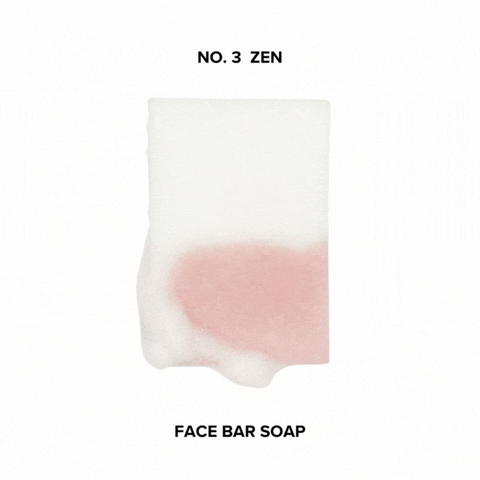
Welcome to Enso Apothecary, where we believe in using the power of nature to support your skincare journey. Our products, crafted with care and expertise, aim to provide holistic solutions for your skin's needs. In this blog post, we'll explore the benefits of using Eucalyptus (Eucalyptus radiata) and Lavender (Lavender angustifolia) essential oils in our No. 3 Zen Face Bar Soap and No. 3 Massage Body Bar Soap, and how the synergy created from these two oils can help manage acne on both your face and body. Whether you're dealing with occasional breakouts or persistent acne, No. 3 Zen Face Bar Soap and No. 3 Massage Body Bar Soap may offer the support you need for clearer, healthier skin.
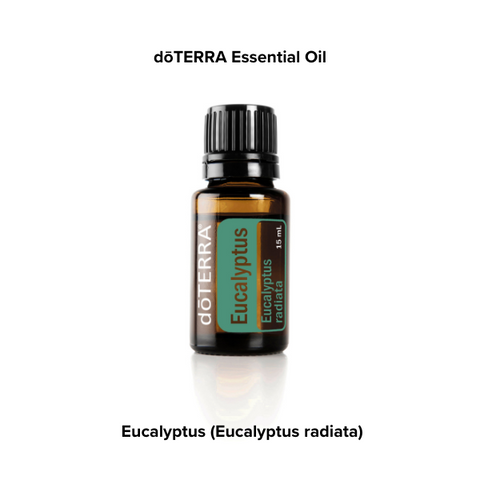
Eucalyptus Radiata: A Natural Acne Fighter
Eucalyptus (Eucalyptus radiata) essential oil is renowned for its antibacterial properties, particularly against Propionibacterium acnes (P. acnes), the bacteria often associated with acne development. Studies have shown that the high concentration of 1,8-cineole (eucalyptol) in Eucalyptus (Eucalyptus radiata) oil effectively inhibits the growth of P. acnes on the skin's surface. Additionally, compounds like alpha-pinene and limonene further enhance its antimicrobial efficacy, making it a valuable asset in combating acne.
 Various chemical components contribute to the therapeutic properties of Eucalyptus (Eucalyptus radiata) essential oil.
Various chemical components contribute to the therapeutic properties of Eucalyptus (Eucalyptus radiata) essential oil.Some of the key components identified in the oil include:
1,8-Cineole: Also known as eucalyptol, this compound possesses antibacterial and anti-inflammatory properties, making it effective in treating acne and reducing skin inflammation.
Alpha-Pinene: Alpha-pinene exhibits antimicrobial properties and can help combat acne-causing bacteria, promoting clearer skin.
Limonene: Limonene has antioxidant properties and helps to reduce oxidative stress on the skin, contributing to overall skin health.
These chemical components work synergistically to provide antibacterial, anti-inflammatory, and antioxidant benefits, making Eucalyptus (Eucalyptus radiata) essential oil a valuable ingredient in acne management skincare products.
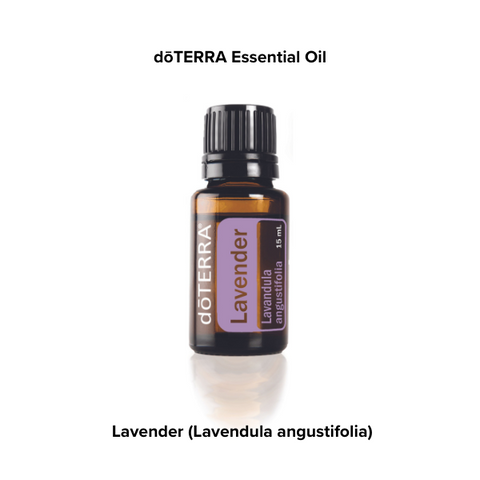
Lavender: Nature's Soothing Solution
Lavender (Lavender angustifolia) essential oil is a beloved ingredient in skincare for its calming and healing properties. Antibacterial and antifungal properties have made Lavender (Lavender angustifolia) one of the most commonly used oils on the skin’s surface in the treatment of acne, eczema and psoriasis; it also improves skin condition. When it comes to acne management, Lavender (Lavender angustifolia) oil proves to be highly effective against both P. acnes and Staphylococcus aureus.
Chemical Components Benefits of Lavender Essential Oil:
Lavender (Lavender angustifolia) essential oil, extracted from the Lavandula angustifolia plant, contains various chemical components contributing to its beneficial properties. The most frequently identified compounds in Lavender (Lavender angustifolia) are linalool, linalyl acetate, 1,8-cineole, camphor, β-caryophyllene, borneol, cis-β-ocimene, lavandulyl acetate, terpinen-4-ol, α-terpineol, β-farnesene.
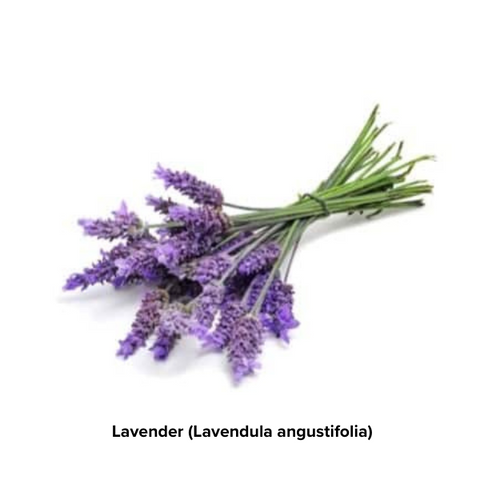
1. **Linalool**: This compound possesses potent anti-inflammatory properties, helping to soothe and calm irritated skin. It also aids in reducing redness and swelling associated with acne breakouts, promoting a clearer complexion.
2. **Linalyl Acetate**: Known for its calming and relaxing effects, linalyl acetate helps alleviate stress-related skin issues. It can also assist in regulating sebum production, preventing excess oil buildup that may contribute to acne formation.
3. **1,8-Cineole**: With its antimicrobial properties, 1,8-cineole combats acne-causing bacteria, reducing the risk of breakouts and promoting clearer skin. It also possesses analgesic properties, providing relief from acne-related discomfort.
4. **Camphor**: Camphor offers cooling and soothing effects on the skin, alleviating inflammation and irritation associated with acne. Its antimicrobial properties further contribute to its efficacy in combating acne-causing bacteria.
5. **β-Caryophyllene**: This compound exhibits anti-inflammatory and analgesic properties, helping to reduce inflammation and pain associated with acne breakouts. It also aids in regulating sebum production, promoting balanced and healthier-looking skin.
6. **Borneol**: Borneol possesses antiseptic properties, making it effective in preventing bacterial infections on the skin's surface. It also helps in soothing and calming irritated skin, promoting faster healing of acne lesions.
7. **Cis-β-Ocimene**: With its refreshing aroma, cis-β-ocimene provides a sensory experience while its antifungal properties help in preventing fungal infections that may exacerbate acne.
8. **Lavandulyl Acetate**: Similar to linalyl acetate, lavandulyl acetate contributes to Lavender oil's calming and stress-relieving effects, promoting overall skin health and well-being.
9. **Terpinen-4-ol**: Terpinen-4-ol exhibits strong antimicrobial properties, effectively targeting acne-causing bacteria and reducing the risk of breakouts. It also helps in soothing inflamed skin, promoting faster healing of acne lesions.
10. **α-Terpineol**: With its antioxidant properties, α-terpineol helps neutralize free radicals, protecting the skin from oxidative damage and premature aging. It also aids in maintaining skin hydration, promoting a healthy and radiant complexion.
11. **β-Farnesene**: β-Farnesene offers anti-inflammatory benefits, reducing redness and swelling associated with acne breakouts. It also helps in regulating sebum production, preventing clogged pores and acne formation.
By harnessing the synergistic effects of these compounds, Lavender essential oil provides a natural and holistic approach to skincare, promoting clearer, healthier, and more radiant skin.
Now that we have some knowledge about Eucalyptus (Eucalyptus radiata) and Lavender (Lavender angustifolia) essential oils, let's dive into exactly what we are discussing when we say Propionibacterium acnes or P. acnes. Propionibacterium acnes was reclassified as Cutibacterium acnes in 2016 after genomic studies and taxonomy revisions. Cutibacterium acnes is a Gram-positive bacterium that frequently appears on human skin, particularly in sebaceous areas like the face, chest, and back. It plays a role in the pathophysiology of acne vulgaris, and it is also believed to be normal microbiota in the skin.
The reclassification of Propionibacterium acnes as Cutibacterium acnes reflects developments in our understanding of the bacterium's genetic diversity and taxonomy. Despite the name change, Cutibacterium acnes' characteristics and clinical value in acne are notably unchanged.
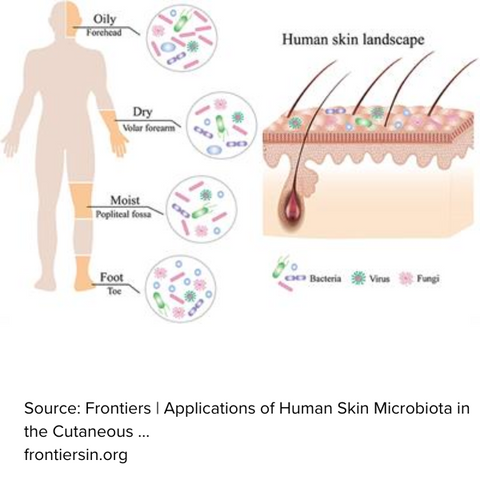
Now let's discuss Staphylococcus aureus. Staphylococcus aureus refers to the specific species of bacterium being discussed. Staphylococcus aureus is a Gram-positive bacterium belonging to the genus Staphylococcus. It is known for causing a wide range of infections in humans, ranging from minor skin infections to life-threatening conditions such as pneumonia, endocarditis, and sepsis.
What does it really mean when you see the word "Gram-Positive"? This shows how the bacteria responded to the Gram stain. In microbiology, Gram labeling is often used to separate bacteria into two groups based on the make-up of their cell walls: Gram-positive and Gram-negative.
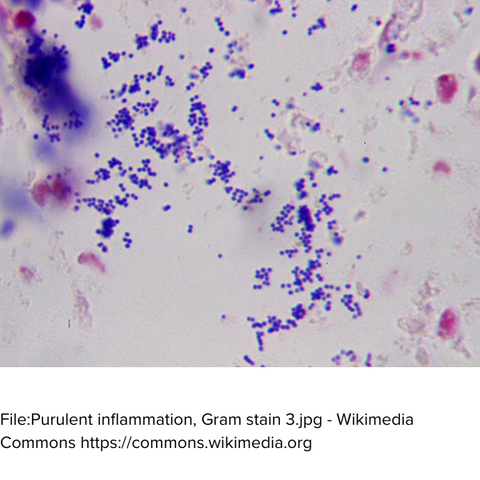
There is a thick layer of peptidoglycan in the cell wall of Gram-positive bacteria. This layer holds on to the crystal violet stain during the staining process, making the bacteria look purple under a microscope.
The cell walls of Gram-positive bacteria, like Staphylococcus aureus, are usually not as complex as those of Gram-negative bacteria.
Things like the person's immune system, whether they have other skin problems, and the type of Staphylococcus aureus that is present can change how it shows up on the skin. These infections can be mild to severe. Below are some of the most common ways to spot Staphylococcus aureus on the skin:
The hair shafts can get inflamed, which can lead to red, swollen, and sometimes pus-filled bumps on the skin.
When your oil glands or hair shafts get sick, you get boils, which are painful, swollen lumps filled with pus.
Impetigo is a very common bacterial infection that shows up as red blisters or spots that break open, leak pus, and turn into yellow crusts.
Cellulitis is an illness of the skin's deep layers that makes it red, painful, swollen, and warm.
Abscesses are places where pus builds up under the skin or in the tissues below it. Most of the time, they need to be drained before they can be fixed.
Wound Infections: Staphylococcus aureus can infect cuts, scrapes, and other skin injuries. This can make the wounds take longer to heal and make the area red, swollen, and painful.
The items we use are very important if we want to have healthy, glowing skin. It's no secret that skin is very strong, but it can also be tender and prone to a number of problems. This is exactly why selecting the right skin care products is so important, especially when you have problems with your skin like acne, redness, or infections. When this happens, it's very important to use clean, skin-friendly products. This will aid in keeping sensitive skin from getting worse, but it also helps it get better. Our company, Enso Apothecary, knows how important this delicate balance is. That's why all of our soaps are intentionally made to help keep skin healthy and support the skin's healing process.
Think about this: Imagine having to deal with skin problems like eczema, acne, or rashes that are really annoying. When this happens, putting certain chemicals on your skin or using soaps with strong scents might make the problem worse instead of better. On the other hand, our soaps are made with great care, putting gentle, skin-beneficial ingredients that relax and protect first.
You don't want to make a situation worse that is already tough. This is exactly why it's important to choose products that don't contain any harsh chemicals, fake scents, or rough materials. We are different because we are dedicated to creating skin care products that help your skin's natural healing process.
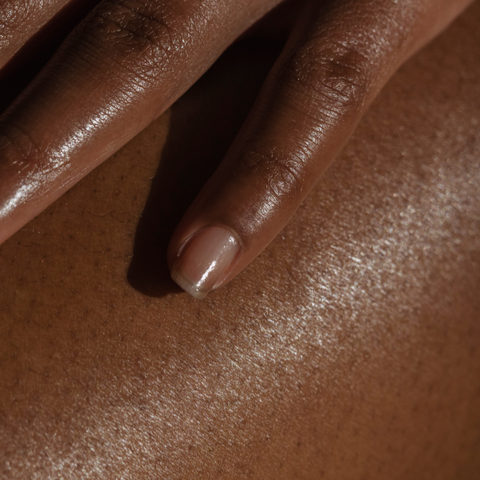
When you grab your next bar of soap, think about what your face and body need. Carefully pick the products you use on your face and body, and let your skincare routine show how much you care about your skins health and overall wellness.
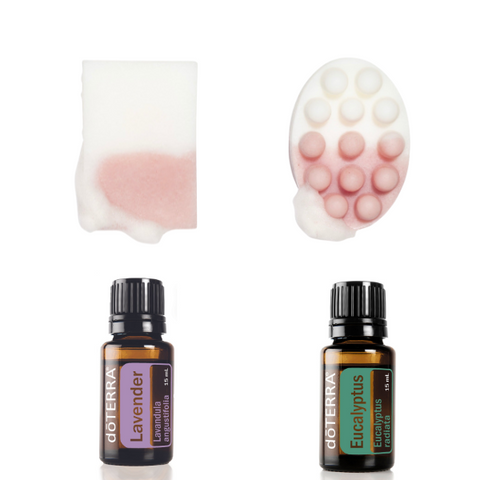
You can be sure that Enso's product range is taking good care of your skin and giving it the boost it needs to become radiant and strong. You can find more information about our No. 3 Zen Face Bar Soap and No. 3 Massage Body Bar Soap here. Let your next bar of soap be a handmade bar from Enso Apothecary! #ZEN4SKIN
Sources:
1. Asare, Ebenezer Aquisman & Eric Kwabena, Droepenu. (2019). The Chemical Compositions and Antibacterial Activity of Eucalyptus Radiata Leaf Essential Oil. https://www.researchgate.net/publication/348431885_The_Chemical_Compositions_and_Antibacterial_Activity_of_Eucalyptus_Radiata_Leaf_Essential_Oil
2. Barbosa, L. C., Filomeno, C. A., & Teixeira, R. R. (2016). Chemical Variability and Biological Activities of Eucalyptus spp. Essential Oils. Molecules (Basel, Switzerland), 21(12), 1671. https://doi.org/10.3390/molecules21121671; https://www.ncbi.nlm.nih.gov/pmc/articles/PMC6273930/
3. Nurzyńska-Wierdak, R., Pietrasik, D., & Walasek-Janusz, M. (2022). Essential Oils in the Treatment of Various Types of Acne-A Review. Plants (Basel, Switzerland), 12(1), 90. https://doi.org/10.3390/plants12010090; https://www.ncbi.nlm.nih.gov/pmc/articles/PMC9824697/
4. Wikipedia contributors. (2024, March 21). Staphylococcus. In Wikipedia, The Free Encyclopedia. Retrieved 18:34, March 28, 2024, from https://en.wikipedia.org/w/index.php?title=Staphylococcus&oldid=1214759638
5. Wijayadi L.J. The Role of Herbal Plant Essential Oils in the Treatment of Acne Vulgaris. Sci. Midwifery. 2022;10:3096–3103. doi: 10.35335/midwifery.v10i4.764. [CrossRef] [Google Scholar]
Disclaimer: The content provided in this blog post is for informational purposes only and should not be considered as medical advice. The information presented here is not intended to diagnose, treat, cure, or prevent any disease. Always consult with a qualified healthcare professional before using any essential oils or making changes to your healthcare regimen, especially if you are pregnant, nursing, have a medical condition, or are taking medications.
Furthermore, the statements made regarding the benefits of essential oils have not been evaluated by the Food and Drug Administration (FDA). Essential oils are not intended to substitute for professional medical advice or treatment. It is essential to conduct thorough research and seek guidance from healthcare professionals before using essential oils, particularly if you have any underlying health concerns.
Individual results may vary, and the efficacy of essential oils may differ based on individual circumstances. The author and publisher of this blog post are not liable for any adverse effects or consequences resulting from the use of information presented herein.

